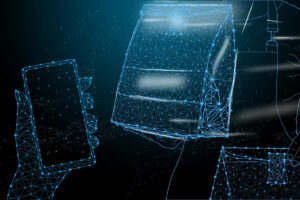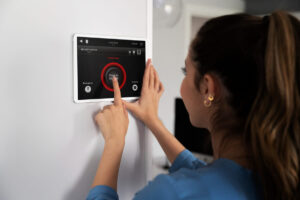The integration of sophisticated Co-Pilot systems is poised to propel the construction sector towards a technological revolution. These artificial intelligence (AI) and machine learning (ML)-powered technologies have the potential to completely change the way that construction projects are managed, planned, and carried out. The future of Co-Pilots for construction promises greater productivity, reduced expenses, and enhanced security measures, making it a thrilling opportunity for industry stakeholders.
The construction sector is well-known for its complexity and the wide range of difficulties it encounters, including labor shortages, safety issues, and project delays, and cost overruns. The adoption of co-pilot systems is a major advancement in this dynamic environment. These sophisticated systems, which make use of cutting-edge technologies, are made to support project managers and human workers by offering automated solutions, real-time insights, and predictive analytics.
Co-Pilot system adoption is not merely a fad; rather, it represents an evolution that is required to satisfy the construction industry’s increasing needs for sustainability, precision, and efficiency. Looking ahead, the industry’s next wave of growth and change will be largely driven by the integration of these cutting-edge instruments.
Table of Contents
Innovations for the Future of Co-Pilots for Construction
Here are 7 innovations shaping the future of Co-Pilots for construction:
1. Artificial Intelligence and Machine Learning
The potential of AI and ML resides at the core future of Co-Pilots for construction. Co-Pilot systems can now evaluate massive volumes of data from several sources, such as project schedules, building information modeling (BIM), and sensor data from construction sites, thanks to these technologies. Co-Pilots powered by AI are able to anticipate any delays, allocate resources optimally, and even recommend the most effective building techniques.
For example, past project data can be analyzed by machine learning algorithms to find trends and forecast results. With the use of this predictive ability, project managers may anticipate possible problems and take preventative action to reduce delays and cost overruns. AI can also be used to schedule resources and tasks optimally, ensuring that every part of the project operates smoothly and effectively.
2. Construction Robotics and Automation
Another important development influencing the future of Co-Pilots for construction is the integration of automation and robotics. Robotic arms and other autonomous technology may complete dangerous and repetitive tasks quickly and precisely. These devices can be supervised by co-pilot systems, which guarantee their safe and efficient operation.
For instance, the usage of drones for site assessments, progress monitoring, and examining difficult-to-reach places is growing. Drones with sophisticated sensors and high-resolution cameras can feed real-time data to the Co-Pilot system, which can use it to identify abnormalities or possible safety risks. Similar to this, robotic arms can do jobs like welding, pouring concrete, and bricklaying, greatly lowering the need for manual labor and improving the pace and accuracy of construction.

3. The Internet of Things
By facilitating real-time data gathering and device connectivity, the Internet of Things (IoT) is completely changing the future of Co-Pilots for construction industry. IoT sensors that are integrated into building supplies, tools, and structures offer real-time data on a range of factors, including temperature, humidity, structural integrity, and equipment performance.
These data are used by Co-Pilot systems to track and oversee building activities in real time. Sensors, for instance, can identify when maintenance is needed for equipment or when the quality of construction is at risk due to external factors. Real-time monitoring lowers downtime, avoids expensive rework, and preserves the effectiveness and safety of the building site.
Suggested article to read: The Role of IoT in Co-Pilot for Construction; 2025 Guide
4. Virtual Reality and Augmented Reality in Construction
Additionally essential to the future of Co-Pilots for construction are AR and VR technologies. These immersive technologies improve on-site decision-making, training, and visualization. By superimposing digital data on the real environment, augmented reality (AR) enables construction workers to view intricate blueprints and instructions right in front of them. This can greatly lower mistakes and raise building work’s accuracy.
Contrarily, virtual reality (VR) offers a virtual setting where project stakeholders can communicate and examine project plans prior to the start of construction. By using this virtual tour, it is possible to proactively identify any potential design defects or concerns that may develop during construction and make necessary revisions.
5. Blockchain in Construction
Blockchain technology is starting to show promise as a potent instrument for improving accountability and transparency in future of Co-Pilots for construction industry. Blockchain guarantees that all project stakeholders have access to a single source of truth by generating a decentralized and unchangeable ledger of transactions.
Contract management, material procurement and delivery tracking, and milestone fulfillment verification are all possible with this technology. When certain requirements are satisfied, smart contracts—self-executing agreements with the terms explicitly encoded into code—can automate payments and other contractual duties. This simplifies project management procedures by lowering the possibility of disagreements and delays.
6. Eco-Friendly Construction
Future of Co-Pilots for construction will increasingly include sustainability as a fundamental component. Co-Pilot systems maximize resource use, cut waste, and lessen the environmental effect of construction operations, all of which can assist construction companies in implementing greener practices.
IoT sensors can track energy use and emissions, and AI-driven analytics can determine the most environmentally friendly building materials and techniques. Future of Co-Pilots for construction systems can also guarantee adherence to environmental laws and guidelines, assisting building firms in reaching sustainability objectives and lowering their carbon footprint.
7. Improved Safety Procedures
The construction sector places a high priority on safety, and future of Co-Pilots for construction are expected to significantly improve this aspect going forward. AI and IoT technology allow for ongoing on-site safety condition monitoring, spotting possible risks before they cause mishaps.
Wearable technology, such as sensor-equipped vests and smart helmets, may monitor employees’ vital signs and movements and notify managers of any indications of fatigue or risky behavior. Robots and drones can carry out risky jobs, lowering the risk to human workers. Co-Pilot systems can establish a safer working environment and drastically lower the incidence of accidents and injuries on construction sites by incorporating these technologies.
Suggested article to read: Enhancing Safety by Co-Pilot for Construction Technology (2025)

Conclusion
Numerous cutting-edge technologies are reshaping the future of Co-Pilots for construction in the construction industry with the potential to increase productivity, cut expenses, and improve sustainability and safety. Blockchain technology, robotics and automation, IoT, AR and VR, AI and machine learning, and sustainable building techniques are all coming together to change the construction sector.
Construction companies who embrace these developments will be well-positioned to drive the industry forward as these technologies continue to evolve and integrate. By using Co-Pilot systems, construction businesses will be able to fulfill the growing expectations of quality, speed, and sustainability in the contemporary construction landscape, in addition to driving operational benefits.
Co-Pilots in construction have a bright future ahead of them, as they have the power to transform the sector and open the door to safer, more intelligent, and productive building techniques.
Suggested article for reading:
Top 30 Tips for Safety Solutions in Hazardus Building Sites (2025)
Construction Site Safety: Comprehensive Guide 2025
Top 11 Construction Safety Tips for 2025
Resources:
AutomationWorld | Constrafor | Kriskrug | DigitalConstructionToday
For all the pictures: Freepik





